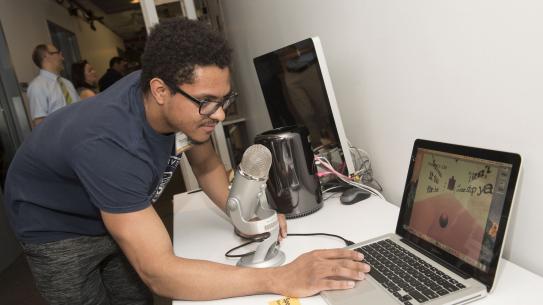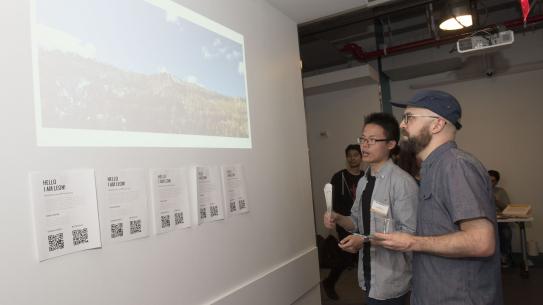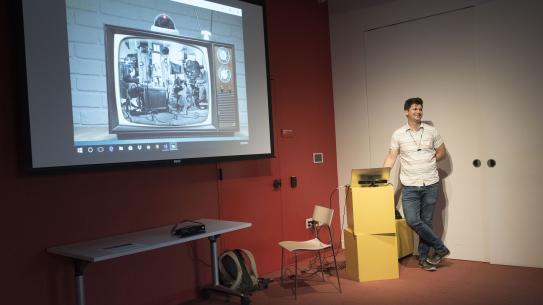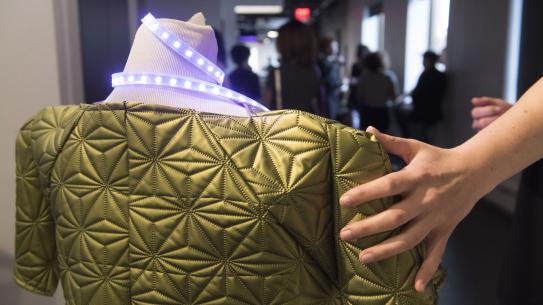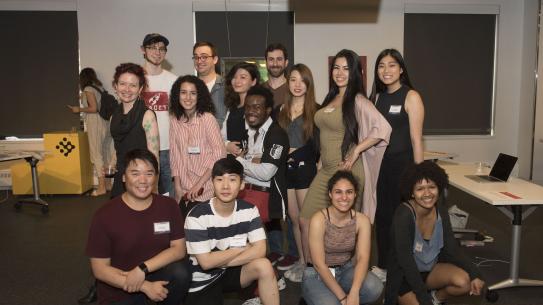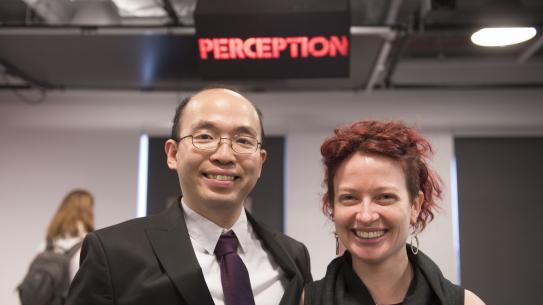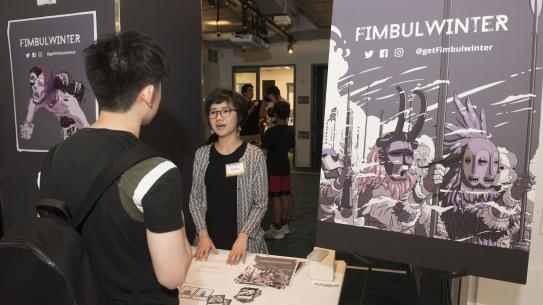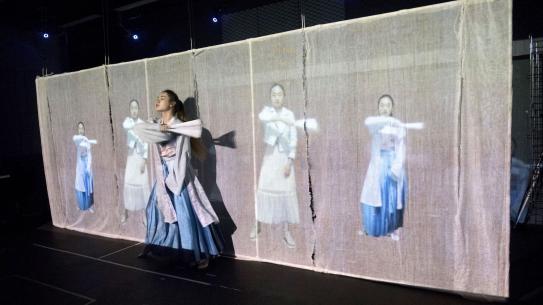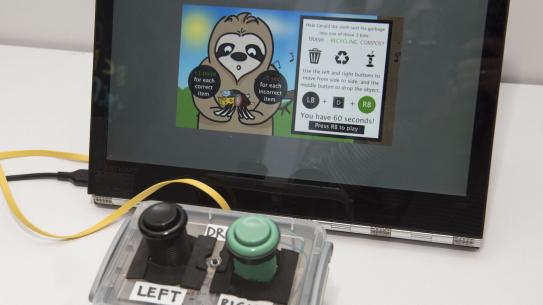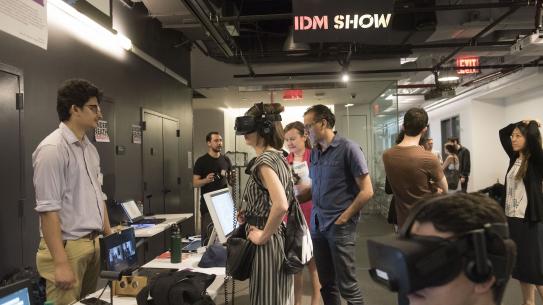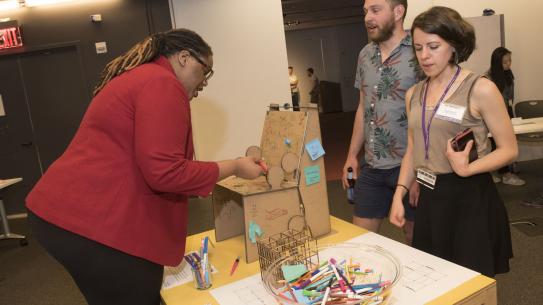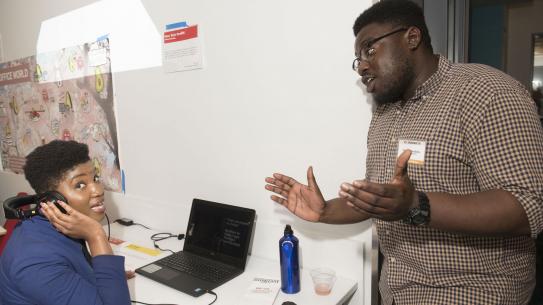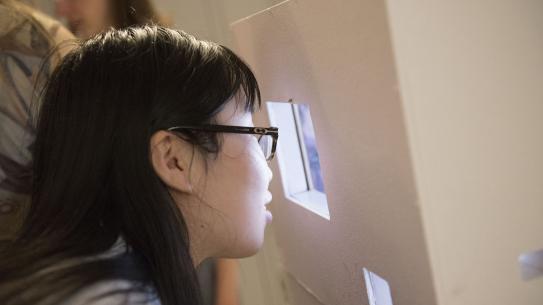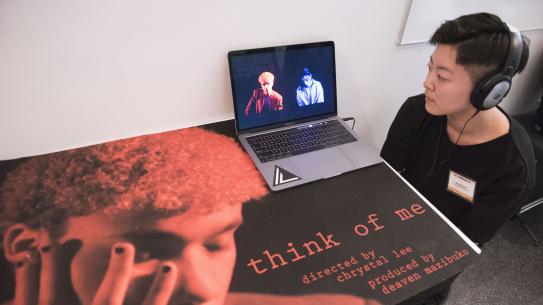Perceiving Reality, Distortion, and More through Technology
Dozens of Projects Displayed at 2018 Integrated Digital Media Showcase

Every year at the Integrated Digital Media (IDM) showcase, attendees are sure to discover something new, innovative, creative, and downright inspiring. This year’s showcase held on May 4, 2018 in NYU Tandon’s Media and Games Network (MAGNET) was no different.
The annual showcase features student projects and designs that all embody the IDM ethos of merging together creativity, research, emerging technologies, and a multidisciplinary approach. Celebrating the extraordinary work its students develop throughout the year as well as their academic careers at NYU Tandon and within the IDM program in the Department of Technology, Culture and Society, this year’s showcase centered on the theme of Optics, which highlighted the projects “investigating the power of perception to shape realities and distort images in contemporary media.”
The showcase is a student-run event, designed by IDM students for IDM students. Students took charge working in groups to create the showcase — from graphics, wayfinding, social media and public relations, curation, and exhibition design. Throughout the halls of MAGNET, light-up displays built by the exhibition design team guided attendees through the three sections — perception, illusion, and reality —prescribed by the curation team. The selfie mirrors, also designed by the exhibition design team, were a perfect spot to take a break from the show and snap pictures to share on social media.
The students worked extremely hard these last few weeks, in pulling this show together. We had so many students helping out. You could tell from the extraordinary energy on the floor that night. It’s incredible. This was the best show we’ve had yet and the showcase team pulled out all the stops for this one.”
— Visiting Assistant Professor and showcase mentor Katherine Bennett.
Displaying her project “Aware,” Cadence Daniels focused on ethical literacy within product development, in which she created a tool that can help new companies and emerging leaders consider inclusion throughout product ideation and development. “This tool aims to bring together corporate responsibility, diversity, and inclusion to the product development stage,” Daniels said.
Human-centered design and technology are also at the heart of REMI (Remote Epicurean Manual Intelligence). Conceived by graduate and undergraduate students Annie Brinich, Calvin Cheang, Isabel Chen, Katie Lau, Jimmy Lauchoy, and Richelle Newby, REMI evolved out of a Microsoft Design Challenge within the User Experience Design course taught by Dana Karwas, and aims to help chefs with visual impairments cook safely. They interviewed multiple consultants, experts, and professional chefs, including Christine Ha, the winner of the third season of Master Chef and who is visually impaired. Their product is two wearable devices for each wrist, named REMI and RAMI, which communicate through voice commands and employ object identification, heat sensing, haptic feedback, and navigational assistance to help chefs find a utensil or spice container, keep them safe from hot surfaces, or even set a timer.
“It’s important that everything we’re designing and building is something that’s approved by the user and is something that will actually be useful for someone with visual impairments,” Newby explained. “Safety and efficiency were the two main things expressed to us, so we wanted to incorporate them fully into our devices.”
Also within the vein of wearable technology was Katie Pulles project “Exploring Touch,” a long-term project that Pulles hopes will lead to an immersive art piece about understanding anxiety. “In order to understand how to convey anxiety to people, I needed to collect data, so using wearable tech I created clothing that correlates data from biosensors and touch sensors,” Pulles explained. Tracking heart rate, sweat rate, manual emotional input, and more, a shirt or sweater can collect data when people feel anxious in public spaces, especially in a city like New York. “I want my eventual project to be an immersive experience for users to know what it’s like to go through anxiety, and in order to gather real data, it would have to be something on your person, so wearable tech is the best option.”
Many other projects touched upon how to use technology in how we perceive reality and our physical and emotional responses, such as Alexis Zerafa’s “Odmor,” a mobile augmented reality application that connects with a wearable ring to help people with anxiety and panic attacks learn breathing control techniques. Mayukh Goswami and Siyuan Qiu displayed their virtual reality experience Contrapasso VR, which explored a person’s psyche with the onslaught of mass media influences.
Breaking boundaries and barriers of reality, art, and technology, the student projects at the IDM showcase dabbled in a variety of mediums, from film, to VR/AR, to gaming to engineer new experiences and designs.
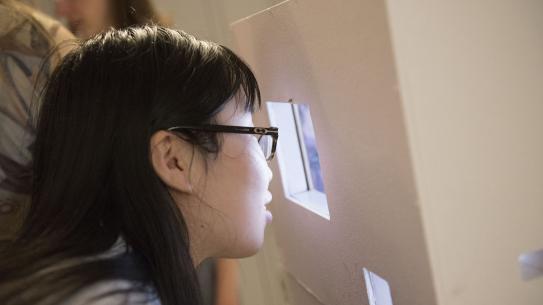
Learn more about Integrated Digital Media at Tandon
________________________________________________________________
Camila Ryder
Graduate School of Arts and Science
Master of Arts in English Literature, Class of 2018


